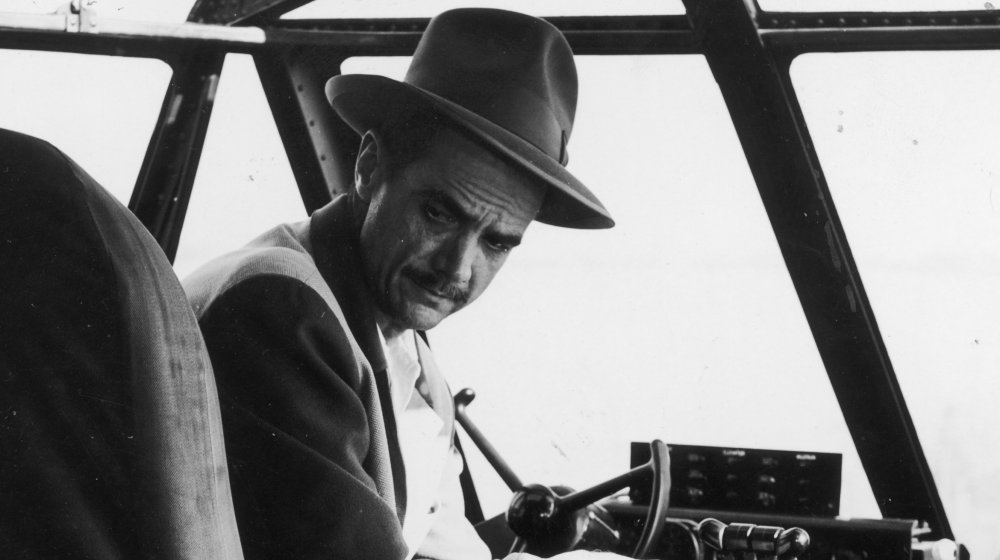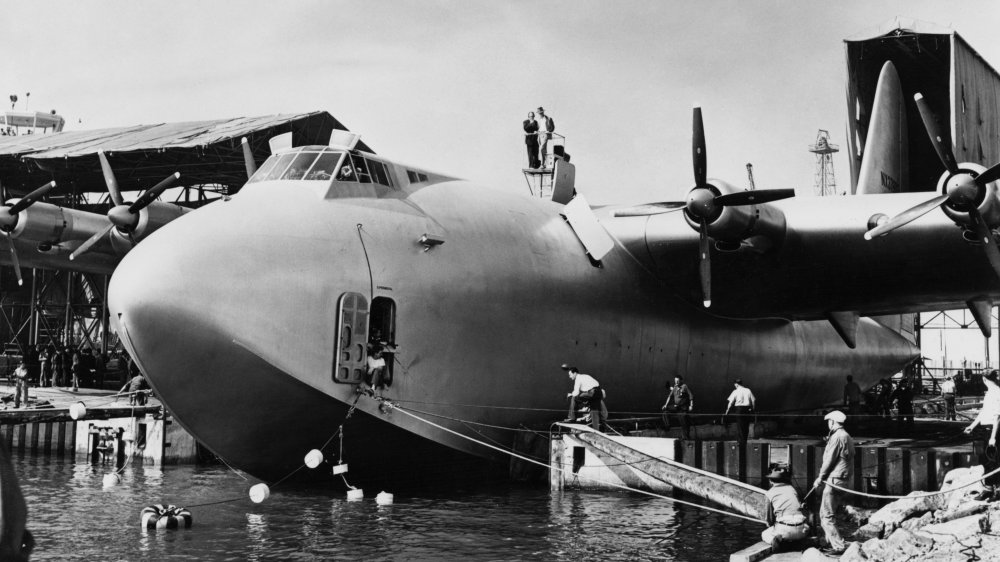Here's How Howard Hughes Made His Fortune During The Depression
The wealthy can be really weird people, and perhaps the prototypical eccentric millionaire was Howard Hughes, the famous investor portrayed by Leonardo DiCaprio in The Aviator. Hughes' fortunes made him an irresistible figure for Hollywood, and in people's imaginations ... but did you know he made his money during the Great Depression?
Hughes, from the beginning, had a head start in the business world, having inherited his father's firm, the Hughes Tool Company. Entrepreneur writes that Hughes, whose parents died when he was still a teenager, was not interested in the administrative side of the business, so he outsourced the running of the company. The accountant he hired managed to grow the business into a $75 million empire, and this enabled Hughes to live a life of luxury. He indulged in his passion for filmmaking and flying, the latter of which made him even richer: it was in 1932, at the height of the Depression, that Hughes launched the Hughes Aircraft Company, using the money from his first business, and the success of the movies he'd made. From then on, Biography explains, he developed a passion for both developing new aircraft, and risking his life to test them.
Testing planes was his new passion
Hughes started his aircraft business mainly to fulfill his dream of breaking the world airspeed record, reports Entrepreneur. The Hughes Aircraft Company built and designed the H-1, an experimental airplane that did set a new record of 135 miles per hour. To continue making more experimental airplanes, Hughes bought a sizable interest in TWA, and began building aircraft for the military. It was this relationship with the military that led Hughes to develop the Spruce Goose, the largest wooden flying aircraft ever built, according to the Evergreen Aviation and Space Museum. The Spruce Goose was meant to carry additional transportation and troops during World War II, but the government canceled the contract when it became obvious the plane would not be finished by the end of the war.
Hughes eventually pulled away from public life, after an accident that occurred when he was test piloting a plane, per Entrepreneur, which broke every bone in his body, and led him to become addicted to pain killers. He moved to Las Vegas in the 1960s, to avoid California taxes, and bought several properties in the area. He also established a medical facility in Florida.
Hughes died in 1976, with an estimated net worth of $2 billion. He did not leave a will, creating a cottage industry of people claiming to be his actual heir.

